I hate saying that the Dossin Great Lakes Museum isn’t quite exceptional, because I really enjoyed it. However, as a savvy museum visitor who walked in the door of close to 100 museums over the past two years, I have very high expectations. My standards for an exceptional museum focus on a combination of the collection and how it’s cared for and displayed, plenty of seating, solid storytelling about the artifacts, and excellent hospitality. All of this is so important to me that I keep a checklist when I visit museums, and I maintain a database about each of my museum visits.
Let me start by describing the Dossin Great Lakes Museum and sharing what I enjoyed. I’ll close with what I wish they had done differently.
Even though I grew up in Detroit, I had never been to the Dossin Museum. But when I was planning one of my museum road trips that included Detroit, the Dossin popped up in my research. It’s not only in Detroit, the city I grew up in, but it’s on Belle Isle, an island in the Detroit River that I visited frequently with my grandparents. When we went to Belle Isle, we had picnics; floated small handmade boats on the model boat basin; warbled on the whistles my grandpa made us out of willow branches; ice skated on the lake; visited the Belle Isle Aquarium; and walked around the James Scott Memorial Fountain. For whatever unknown reason, we never made it to the Dossin.
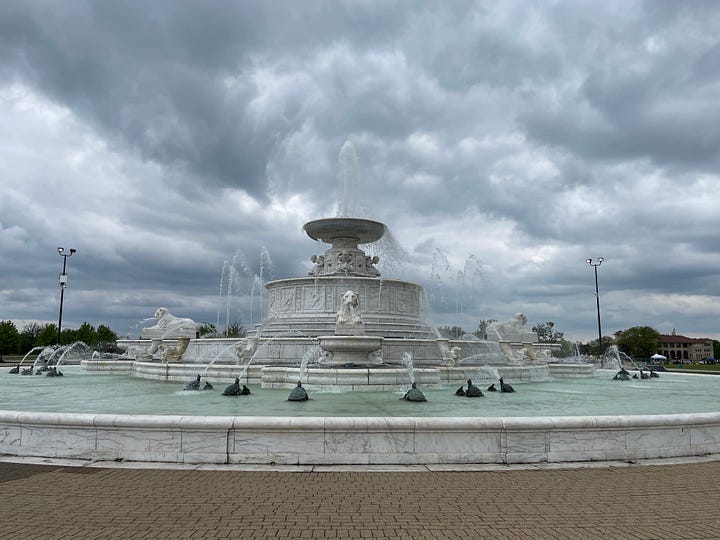
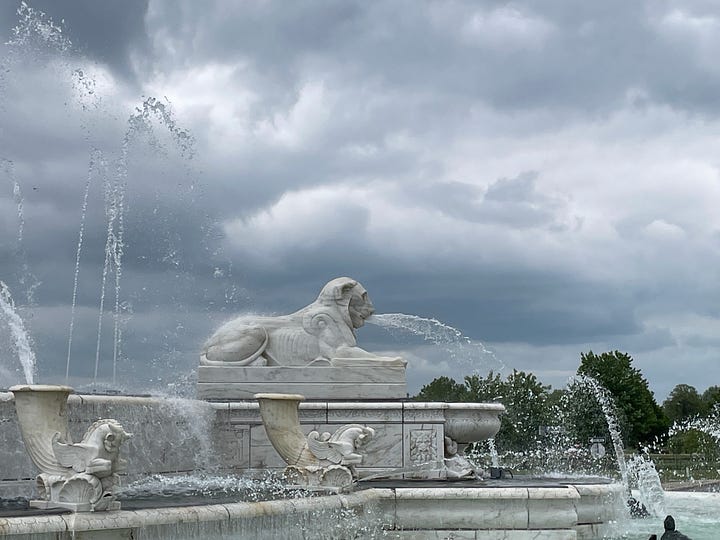
It's a small museum that tells the story of the Great Lakes, with a focus on the impact of the Detroit River and the Great Lakes and the area’s social and industrial history. As you park, you’re at the edge of the Detroit River, looking across at Windsor, Canada, setting the scene even before you walk in the door.
The staff at the front desk were friendly and helpful. And, the museum is reasonably priced at $5 as they try to stay accessible to as many people as possible. They also have a few items for sale in their small gift shop area.
The first exhibit is visually dramatic. It’s called The Gothic Room. It was originally from the passenger steamship called The City of Detroit III. It’s part of an elaborate room that features dark wood paneling and stained glass, highlighting the grandeur of early 20th-century steamship travel. It was designed in the Gothic Revival style with intricate carvings, stained glass, and period furnishings that capture the grandeur of lake travel in its heyday. The room is a reconstructed version of the Gentlemen’s Lounge with the stained glass in front of you and a simulated view of the Detroit River shore line from the early 1900s to the right. This room was removed from The City of Detroit III in 1953 before the ship was scrapped.

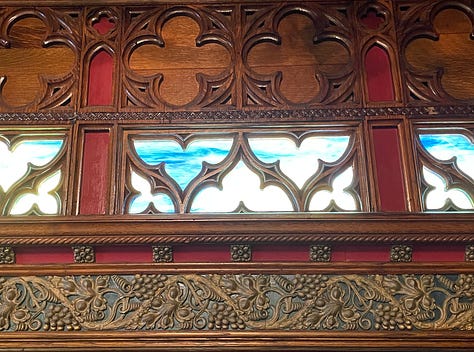
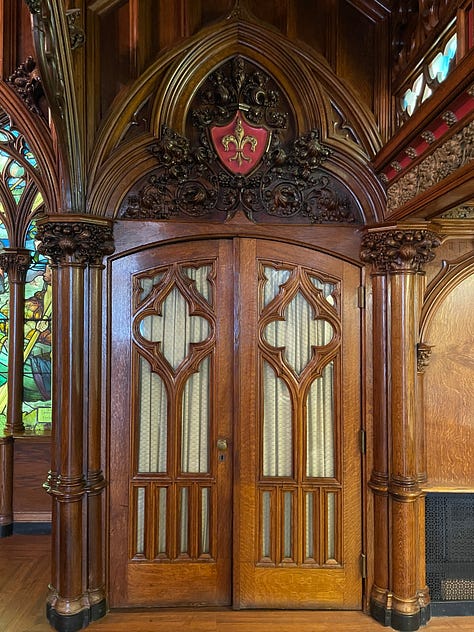
The Gothic Room provides visitors with a rare glimpse into the opulence of historic Great Lakes voyages which was new for me, being that my point of reference for ships on the Detroit River and the Great Lakes tended to be freighters. And, for those of you of a certain age from Detroit, there was also the Bob-lo Boat – a passenger ferry that carried us over to Bob-lo Island Amusement Park. A wee form of travel on the Detroit River.
I was also impressed with the pilot house – the actual pilot house – of the S.S. William Clay Ford freighter. You climb steps to get to it and then look out large windows onto the Detroit River. I felt like the captain! Yes, I’d seen pilot houses in movies, but it felt rather dramatic to be standing in one, even if it wasn’t still on a ship. The William Clay Ford carried coal and iron ore from the Upper Great Lakes Region down to the River Rouge Steel Plant, part of the Ford Motor Company. This ship also has a sad yet brave story to tell. When the Edmund Fitzgerald freighter went down in 1975, the William Clay Ford ship went out into the storm to search for survivors. All hands were lost but the William Clay Ford is remembered for the crew’s bravery.
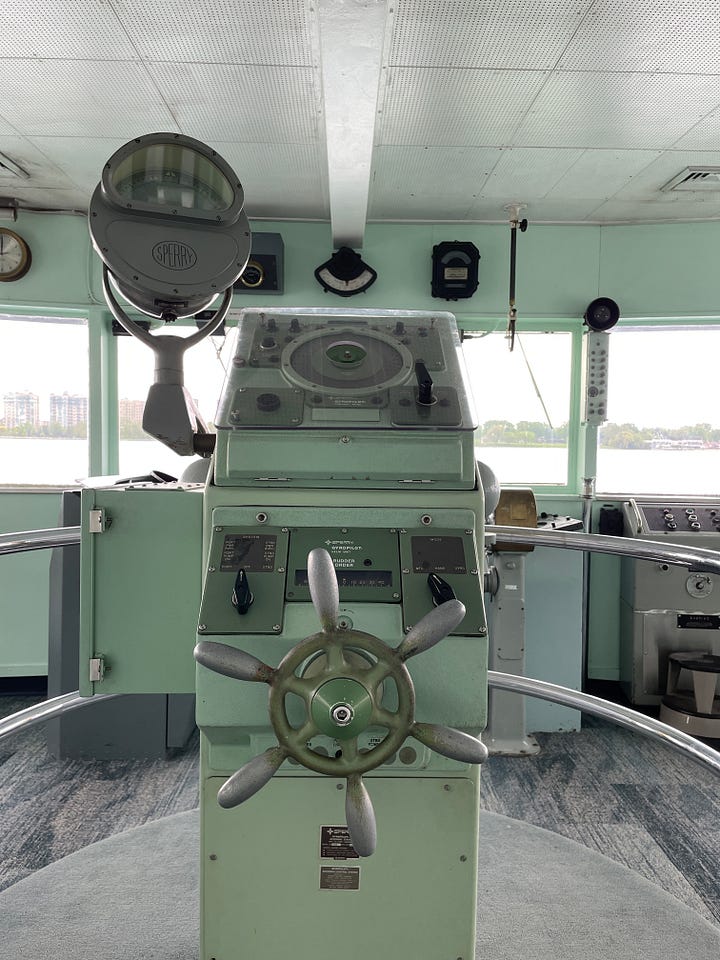
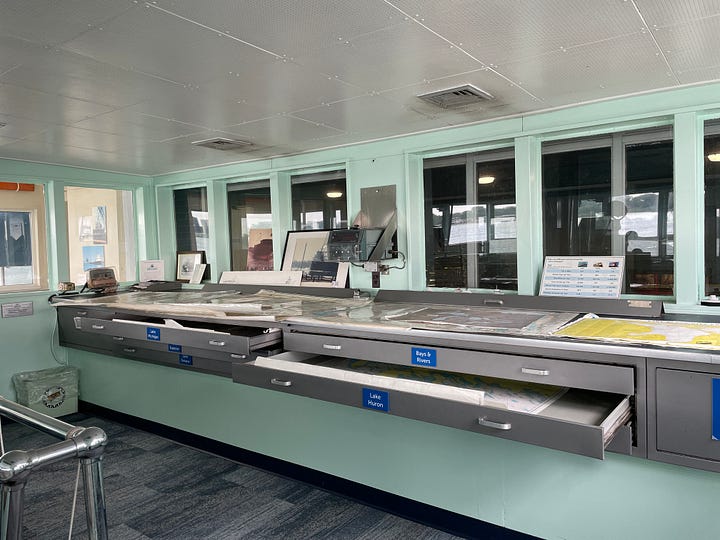
There were numerous interactive displays in the museum including a wearable deerskin jacket and touchable animal pelts, knot tying activities, a mock speedboat experience (it was fast!), and a full-scale 18th century replica canoe, among others.
My favorite fun activity was the Ship’s Steering Wheel game, a virtual simulator where you pretend to dock the William Clay Ford. I lost! So, I won’t be getting a job as the pilot of a freighter!
As I left the museum, I was again intrigued to think that I was at the edge of the Detroit River. The river walk has naval cannons from the War of 1812, as well as an anchor from the Edmund Fitzgerald. As a Michigander who listened on the radio to the storm when the Edmund Fitzgerald went down, it was very moving to see the anchor.
Yes, the Dossin Museum has much to share, telling stories about a vital niche topic related to the history of Detroit and the Great Lakes. However, many of the exhibits feel dated. Some of the signage is warn and/or chipped. Also, similar to most museums I visit, they don’t have any type of introduction or orientation to the museum. This was a new topic for me, so a sign or handout that gave me a tiny background to the subject, along with perhaps a list of three things to keep in mind as I toured through the museum, would have added to my visitor experience.
I imagine that the gaps in the Dossin Museum’s exhibits are due to limited funding. The museum is part of the Detroit Historical Society. The contrast between the Detroit Institute of Arts and the Detroit Historical Society across the street seems to be a clear difference in funding. Like in many cities, the largest museums do not always receive equal levels of prestige or dollars.
Even though the Dossin Museum doesn’t quite meet my standards as an exceptional museum, it is well worth a visit. You’ll learn and be intrigued, whether Great Lakes shipping is a topic you know nothing about, or you have some familiarity.
I was glad I visited!
What’s a niche topic museum that you’ve visited?
Notes that you may have missed:





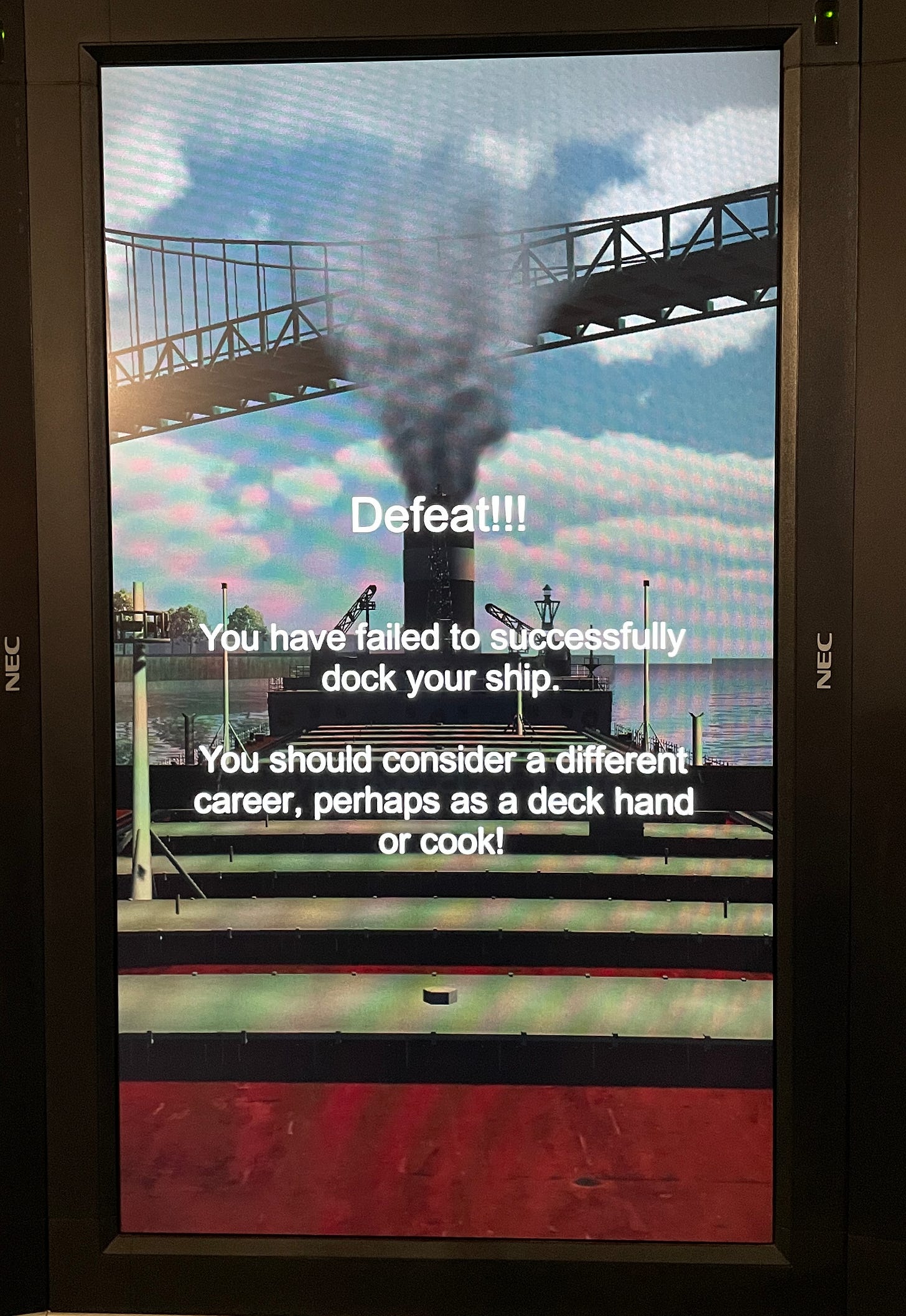
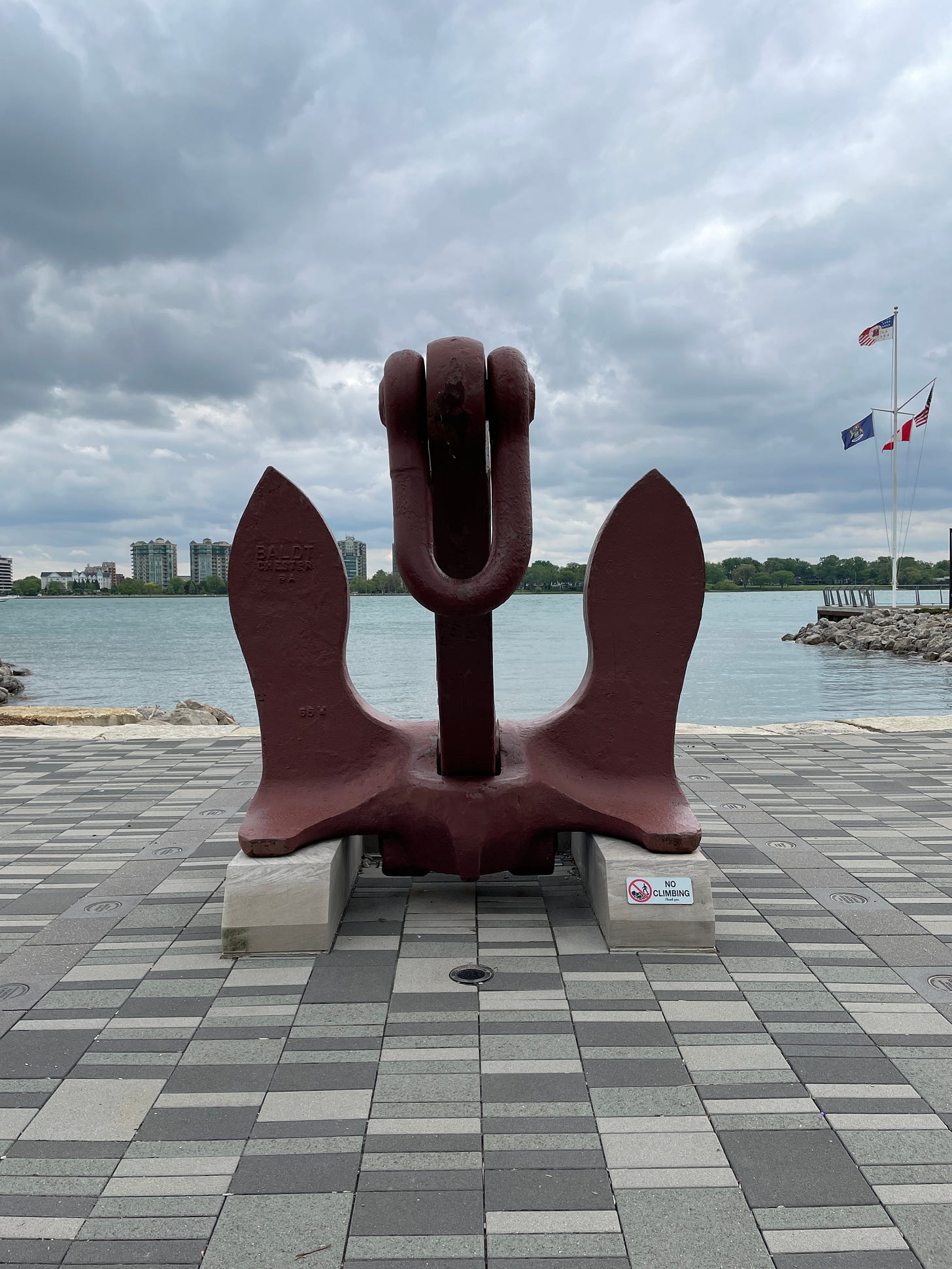

Quite impressive!
The Gothic Room alone looks like reason enough to visit. Very nice!